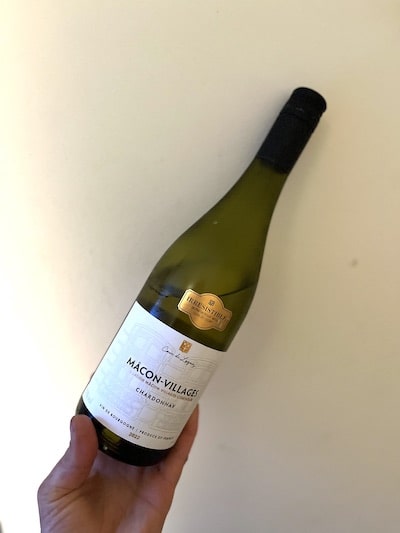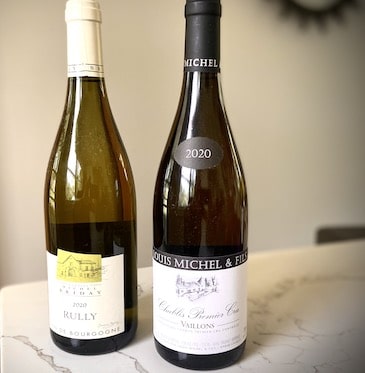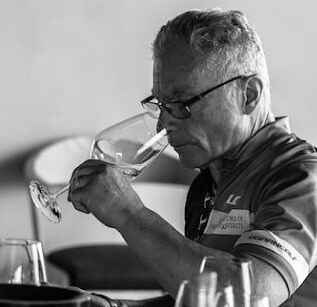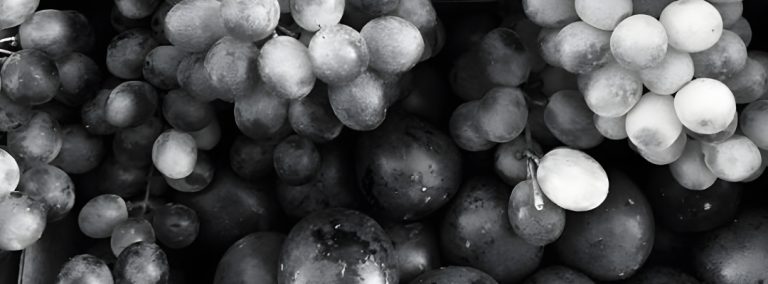Chardonnay is one of the most popular white wines in the United States today. It comes in various styles and an important difference is whether the Chardonnay is oaked vs unoaked. Oaked means the wine has been aged in oak barrels for a certain amount of time.
When wines are aged in oak, they can have more spice to them and you may find some non-fruit flavors, like vanilla, lemon curd and nutmeg. On the whole, oak-aged wines also tend to be richer in texture.
The difference with unoaked Chardonnay, is it is aged in stainless steel or cement. You’ll find more vibrancy and acidity when tasting an unoaked wine, and unoaked Chardonnay tends to be cleaner, so you can taste more primary fruit flavors.
Which Chardonnay do you like best?
If you’ve noticed you have a preference for one style of wine over the other, you’re not alone. The taste difference between oaked and unoaked Chardonnay can be quite significant. There’s also the malolactic fermentation process to consider.
Malo comes from the Latin for apple, and lactic, milk and together they describe a secondary fermentation process that some Chardonnay undergoes in which the crisp, harder citrus and apple like acid in the wine is converted over to a soft, rich and more buttery acid. This fermentation process is the reason why some Chardonnays have such a big and buttery taste, and is more common in oaked wines.
A wine can be partially malo, like a Rodney Strong Sonoma Chardonnay, fully malo like a Rombauer, or have no malo, like a Far Niente Napa Chardonnay. When it comes to this style of Chardonnay, people tend to love it or hate it. So, if you find a wine has too many rich vanilla and cream flavors for you, it may not actually be the oak aging you dislike! Luckily, they make Chardonnay to suit everyone’s taste.

If you like unoaked Chardonnay
Chablis is a French Chardonnay that is traditionally unoaked, or sees very little oak treatment. If you go to the Mâcon, St-Véran or Pouilly-Fuissé regions of France, the wine can also be unoaked. Alternatively, it can be oaked but aged in neutral barrels. Winemakers do this to give the wine complexity without it picking up the flavors of the wood. Try a bottle of Mâcon-Villages and you’ll understand what we mean.
More on Chablis
Some of the best Chardonnay in the world comes from the Chablis region of France and about 75-80% of the wine produced here is unoaked. The rest tends to be only lightly oaked. Chablis is one of the four major growing regions of Burgundy, located northwest of the main areas, somewhere in-between Pouilly-Fumé and the start of the Côte de Nuits.
This wine is made from 100% Chardonnay grapes and divided into levels of quality. The least expensive is Petit Chablis, then there’s Chablis, and next Premier Crus and Grand Crus. The difference with Premier Crus and Grand Crus Chablis is that they are wines made from specific areas of vineyards that produce higher quality grapes, because of their location and soil. Grand Crus are usually the biggest and most full-bodied, they are also the most expensive. Some Grand Crus wine might see oak, while most of the Premier Crus will be unoaked, but it does depend on the producer.


Chardonnay grapes
Chardonnay, like Pinot Noir, is a grape that comes from Burgundy and likes to grow in areas that have cooler temperatures. When it’s cooler, the grapes can spend longer on the vine and the sugars ripen slower. This allows the acidity in the grape more time to develop. After all, winemaking is about achieving the right balance of acidity and sugars! Note, when this grape is grown in a warmer climate, the wine will have less acidity, be fuller in body and have more tropical fruit flavors.
All about oaked Chardonnay
Meursault, Puligny and Chassagne Montrachet are three oaked Chardonnays that come from France. While they are oaked, you will not necessarily pick up on a strong oak flavor. That’s because wine that spends time in oak barrels is exposed to more oxygen than with stainless steel, which gives it more complexity, but there are other factors that influence how the wine tastes:
- Type of wood. French oak is tighter grained and more dense.This is what gives Chardonnay from France such exceptional balance and subtle, silky flavors. Its American counterpart can be larger grained and introduce more sweet spices, and even notes of coconut and ginger to the wine.
- Degree of toasting. In addition to the source of the wood, it’s also important if the barrels have been lightly, medium, or heavily toasted. Toasting is when fire is put inside barrels, which affects the wood the wine comes in contact with and in turn, the degree of absorption of the flavor by the wine.
- Age and size of the barrels. How new the wood is and the internal surface area of the barrels can affect how many oak notes the wine picks up.
- Batonnage or stirring. Batonnage is a process that both oaked and unoaked wine in stainless steel may undergo. It’s a type of stirring at regular intervals which gives the wine a rich texture by making it interact with its lees, or the sediment that comes from aging.
- How long the wine is aged. How long the wine spends in barrels is also important. Some wine can withstand longer amounts of time without the wood overpowering its fruit flavors.
How aging impacts price
These factors influence what you’ll be tasting in a Chardonnay, but they can also affect the price of the wine. For example, French oak may be up to three times as expensive as American, and you’ll see this reflected in the cost of a bottle of Chardonnay from France. A general rule of thumb with many American Chardonnays is the higher the price, the more new wood employed in aging. So, if you want a California Chardonnay without a heavy oak-aged flavor, look for a bottle in the low to medium price range.

California Chardonnay
California, which makes both oaked and unoaked wines, produces some of the best Chardonnay in the country. From Napa, to Sonoma and its Russian River Valley, to Monterey, Anderson Valley and Santa Barbara, you’ll find complex and delicious Chardonnay with layers of flavor that reflect the great diversity of the state’s many microclimates and terroir.
When you’re next at a wine tasting, see if you can taste the subtle differences in flavor and texture in Chardonnay from these six regions:
- Sonoma. Sonoma is an area close to the sea with predominantly clay soil but also sandy loam and volcanic ash. Russian River is the most well-known area for Chardonnay in Sonoma. The wines here are big, layered, and complex, and Sonoma Chardonnay also tends to be oaked. They can be moderate to expensive in price. For example, Rodney Strong Chalk Hill, a specific appellation within Russian River, sells for around $22 a bottle, Ramey $50 a bottle and Merry Edwards will usually be at $100 or more. Note, Sonoma Coast is also emerging as a major producer of Chardonnay.
- Napa. While it can see high temperatures, the Chardonnay grape is mostly grown in the southern part of Napa, which borders San Francisco Bay. This means there’s a big difference in climate compared to higher up in the valley. When tasting a Chardonnay wine from Napa, you may pick up on hints of apple and citrus. Chardonnay from Napa also tends to be higher in acid and will taste less round and fruity.
- Carneros. Carneros is actually a wine growing region at the southern tip of Napa and Sonoma. You’ll taste big and layered complex flavors in wine from this area of California, though it will be mostly oaked vs unoaked.
- Monterey. In Monterey, the wine can have more fruity lemon-lime and citrus notes to it. This is also an area where you will find more unoaked Chardonnay which has been aged in stainless steel.
- Santa Barabara. When you go to Santa Barbara, the Chardonnay can be bigger and have more texture to it. These wines are often rich and have tropical fruit notes to them, with good acidity.
- Anderson Valley. As the northernmost wine growing region in California, Anderson Valley gets cool breezes that the Chardonnay grape loves! When enjoying a white wine from this area, see if you can taste its lemon flavors. Anderson Valley Chardonnays will be fruity with good acidity.
While not located in California, there’s also a famous grape growing region in Oregon you should be aware of. You may not immediately associate the Willamette Valley with a wine like Chardonnay, (think more Pinot Gris for white and Pinot Noir for red) but winemakers here have started producing some excellent Chardonnay. Next time you’re looking for a glass or bottle of white to have with dinner, try a Chardonnay from the Willamette Valley and you won’t be disappointed.
Where else do they make Chardonnay?
You may be more used to seeing Chenin Blanc from South Africa in the white wine section of your local store, but South Africa also produces Chardonnay in wine growing regions along the coast. These are areas that are high enough to get the cooler temperatures the Chardonnay grape prefers. In particular, Hamilton Russell Vineyards is right on Walker Bay and is one of the southernmost areas of the world for making wine. Their Chardonnay has more of a French style and can be similar to tasting a Meursault from Burgundy.
In Australia, particularly in Tasmania, the Margaret River Region and the Adelaide Hills have a cooler climate that’s perfect for growing the Chardonnay grape. They make delicious wine, as does New Zealand, who again is most famous for a different white wine, Sauvignon Blanc, but has started making wonderful Chardonnays too. Last but not least, try a bottle of Chardonnay from Chile for a great tasting and great value wine with citrus flavor.
How to taste Chardonnays
When you’re tasting a Chardonnay, like any white wine, first have a look at the color. It can range from pale gold with a tinge of green to a deep gold. Next, lift the glass to your nose and consider the aromatics of the wine. If it’s oaked and of a particular style, the wine may have hints of wood and toast, notes of butterscotch, and spices, like nutmeg or vanilla. This is in addition to the fruity notes. If it’s an unoaked Chardonnay that was aged in stainless steel, you may have more straight apple and citrus aromatics in the wine.
When the Chardonnay has gone through malolactic fermentation, it will have buttery and creamy flavors and a richer texture. A wine that’s oak aged but isn’t malolactic will still have rounder fruit, as well as complex layers of flavor, but you’ll also be tasting some wood and spice. For unoaked Chardonnays, you can expect wine with more primary fruit, brighter acidity, and a crisp texture.
Keep in mind, if you’re attending a white wine tasting and you’re trying Chardonnays, you won’t necessarily be told if the wine is oaked or unoaked. You can ask, but remember there are other factors that are important, including terroir and the particular style the winemaker has used.


Food pairings for oaked vs unoaked wine
An unoaked Chardonnay is a white wine that pairs best with food that has simpler flavors. You might serve unoaked Chardonnay with clams or oysters on the half shell, shrimp cocktail, or even an Asian noodle dish. In general an unoaked wine goes with lighter food, like salads and grilled chicken. A glass of unoaked Chardonnay might also make a better drinking wine on its own, particularly in the summer when it’s too hot for food and you want your wine to be crisp and fruit forward.
If you have a big oaked Chardonnay, it will go better with richer tasting dishes like crab, Dover sole, buttery scallops sautéed in herbs and in general food served with cream and/or complex sauces. For example, pair a bottle of this style of Chardonnay with pasta in a cream and mushroom sauce. We’ve talked about the difference between a wine that’s produced using the malolactic fermentation process and one that is not. If you prefer this style over an unoaked wine, and you’re having lobster, there’s no better food wine pairing than a rich and buttery, malolactic Chardonnay.
You can also have an oaked Chardonnay with food like roast pork or roast lamb, and we’d recommend a bottle of oaked French Chardonnay if you’re looking for a white wine to accompany coq au vin as well. If you’re not serving food but having cheese and crackers instead, an oaked vs. unoaked wine is probably your best bet.

Chardonnay grapes are used to make champagne and sparkling wine too
A lot of people don’t realize that the Chardonnay grape is also used to make Champagne, and the majority of sparkling wines produced around the world (along with Pinot Noir). In Champagne production, the grapes are picked sooner than you would pick them if you were going to make a table wine, because they need to be higher in acid. If you see a Champagne that says Blanc de Blancs, it means it’s a wine that’s usually made with 100% Chardonnay grapes.





